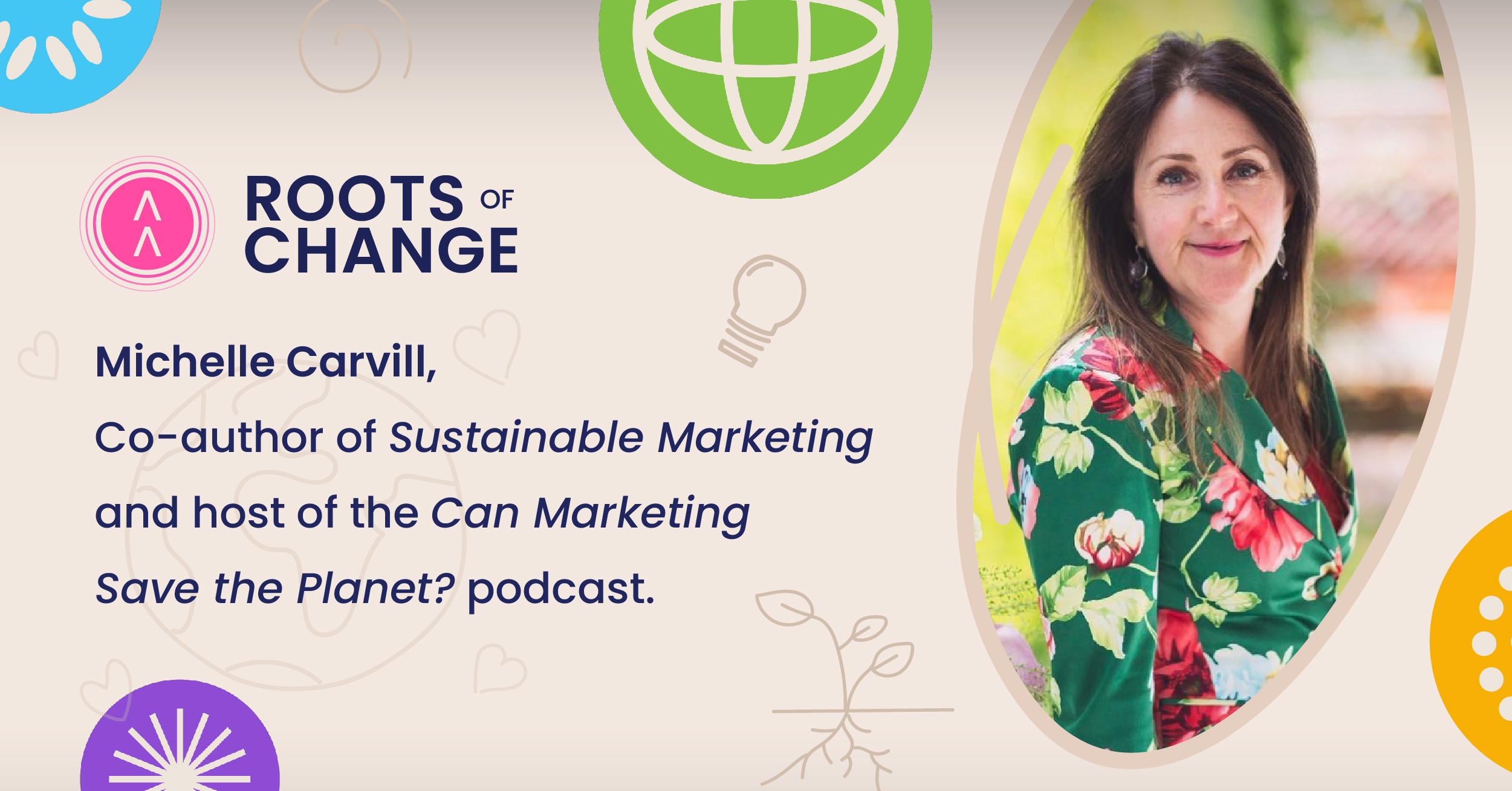How can B2B marketers help save the planet? Advice from a sustainability expert
08 . 07 . 22

As a B2B marketing agency aiming to work more sustainably, we want to find out everything we can about minimising our impact on the environment. So, we spoke to Michelle Carvill, the co-author of Sustainable Marketing – How to Drive Profits with Purpose and host of the Can Marketing Save The Planet? podcast, to find out more about what practical steps marketers can take today.
Working out how and where to start
It pays to have a strategy on sustainability before you begin. Initiatives can fall short if a company takes on more than it can chew — perhaps by trying to “catch up” with where they think they should be at — or because the initiative just doesn’t fit with a brand’s underlying purpose.
The best approach, says Michelle, is incremental and value-driven — and it all starts with asking some seemingly simple yet essential questions. “With sustainable marketing, we start by thinking about purpose and brand: “Who are we? Why do we really exist? What impact do we want to drive?”
Embrace the rewards of ESG (Environmental, Social, Governance)
A failure to articulate brand purpose, much less communicate it, can be expensive. Disengaged workers — those who can’t identify with their employer or don’t believe in what they do — cost the UK economy as much as £21 billion annually, according to Michelle. But a positive approach to CSR (Corporate Social Responsibility) has an equally staggering upside on performance, profitability and staff happiness.
In one 2019 study by Swytch, 40% of millennials had chosen a job primarily because of a company’s sustainability credentials, while 53% said they worked harder when they knew their organisation was making a difference. And companies with high employee satisfaction regularly outperform rivals annually by up to nearly 4%. For marketers implementing sustainability initiatives from the ground up, stats like these will help accelerate stakeholder buy-in on the commercial value of ESG.

Going “inwards” AKA soul-searching
A good sustainable marketing strategy starts with some introspection. But once you’ve defined what your business stands for, what’s next? Michelle suggests breaking down the whole process into three stages – Brand / Strategy / Communication – aligned with her Sustainable Marketing Action Plan focused on bringing the three key stages to life:

After “inwards”, where you take stock of what the employee and customer desires and circulate the progress of those conversations internally, comes “upwards”.
Figuring out how core values and ESG align
The “upwards” stage is where businesses figure out where sustainability sits within C-suite priorities and — based on an assessment of how a business’s values intersect with ESG — how far it needs to be pushed up the agenda. But a top-down approach isn’t always necessary.
“I recently interviewed the head of culture at Auto Trader,” says Michelle, “and he advised that their award-winning four-year sustainability programme came from just two of their employees being really passionate about sustainability, taking Carbon Literacy training and championing driving change within the organisation.”
Getting the message out
Once sustainability is baked into the business, from its values to its business case, the final step is “outwards” — communicating to external stakeholders about the progress the organisation is making, while ensuring the message is transparent and consistent across every touch point.

“Progress over perfection – you don’t have to have it all perfect and planned out from the get-go,” says Michelle. “[The message] can be, ‘This is where we are right now, these are our intentions, this is where we’re heading and these are some of the actions we’re taking.’ It’s important that you’re not ‘purpose washing’ and using sustainability as a campaign – sustainability and impact should be the driver.”
Resources for marketers
For marketers who are nearer the beginning than the end of the Inwards, Upwards, Outwards process, Michelle suggests an excellent range of resources aimed at broadening our thinking about sustainability and all it encompasses. These include:
- The UN’s 17 Sustainable Development Goals, Paris Agreement and COP26
- B Corp, an independent body that certifies the most sustainable firms – and their useful B Impact Assessment tool
- The Green Claims Code, an anti-greenwashing government directive
- Clean Creatives, a collective of ad professionals and bodies against the support of fossil fuel advertising
- Greenwashing.com, which calls out fashion brands on misleading claims
- The Carbon Literacy Project, whose focus lies in educating individuals and organisations around climate change and how it impacts our lives and actions we can all take to bring about positive change.
Regardless of where you are on your sustainability journey, the rewards for companies who embed sustainability into what they do is clear. “Oxford University did a study of over 200 studies relating to sustainability in business,” says Michelle, “and the data showed that ESG practices lowered the cost of capital in 90% of cases, improved operational performance 88% of the time, and 80% of studies showed a positive influence on the performance of businesses’ shares. That underlines the fact that sustainability is good for business, good for consumers, good for investors, good for employees.” And of course, importantly, more balanced in being good for the planet.
We’re big believers in working together to create change so would like to say a huge thanks to Michelle for giving us her time. You can find out more about the incredible work she does at Can Marketing Save The Planet?

